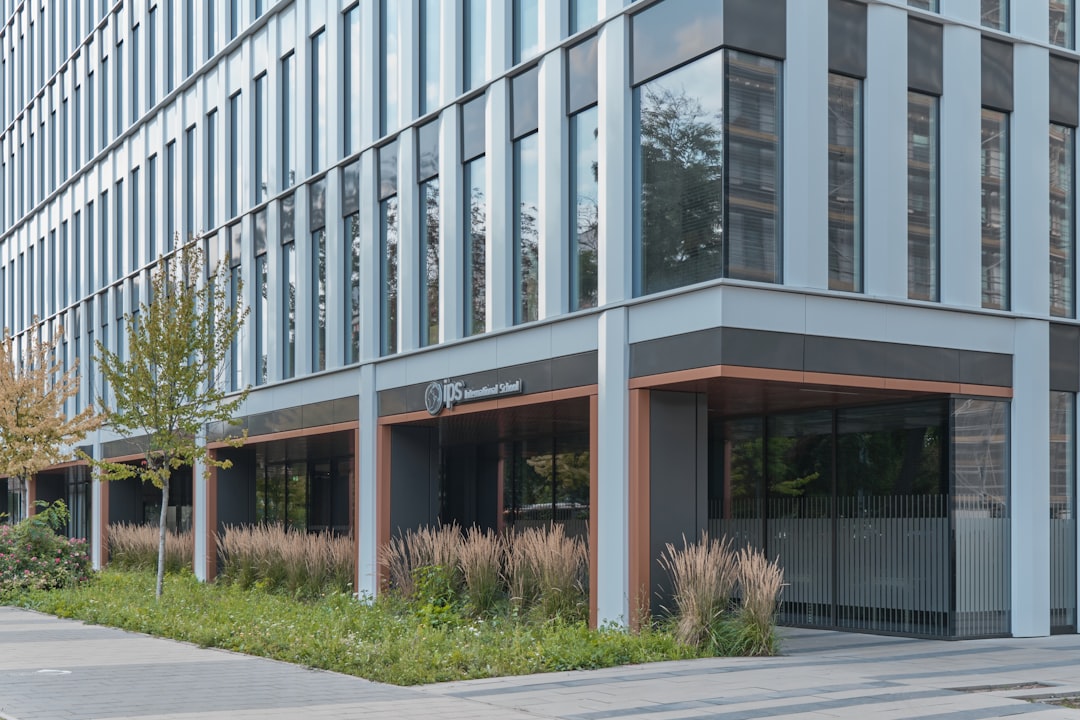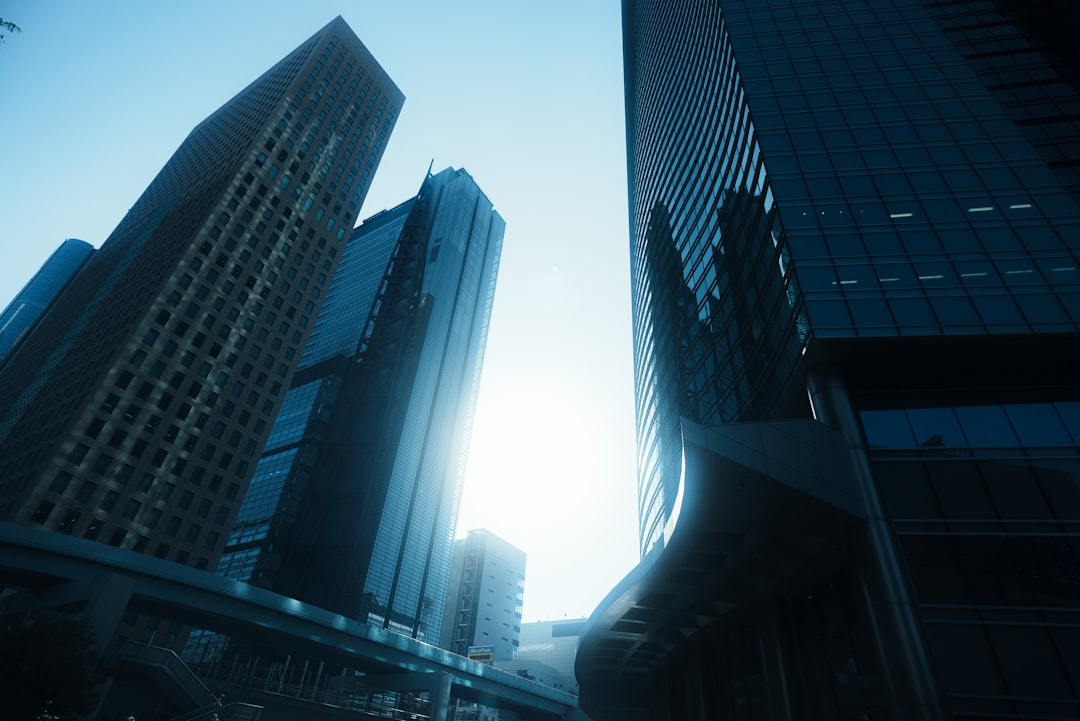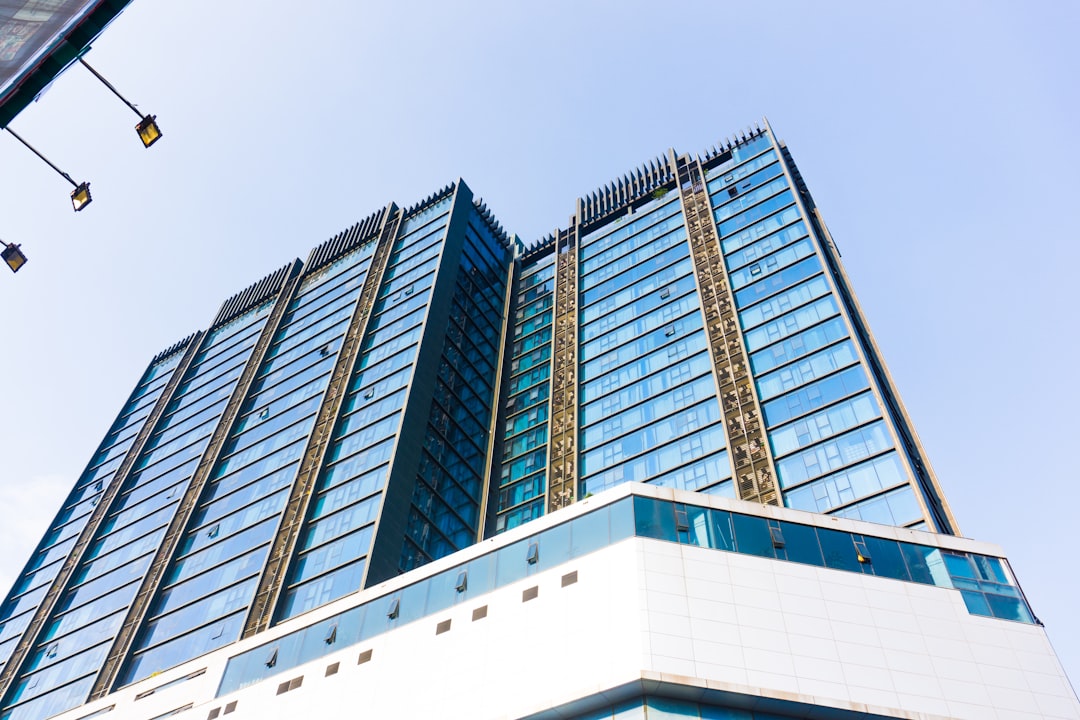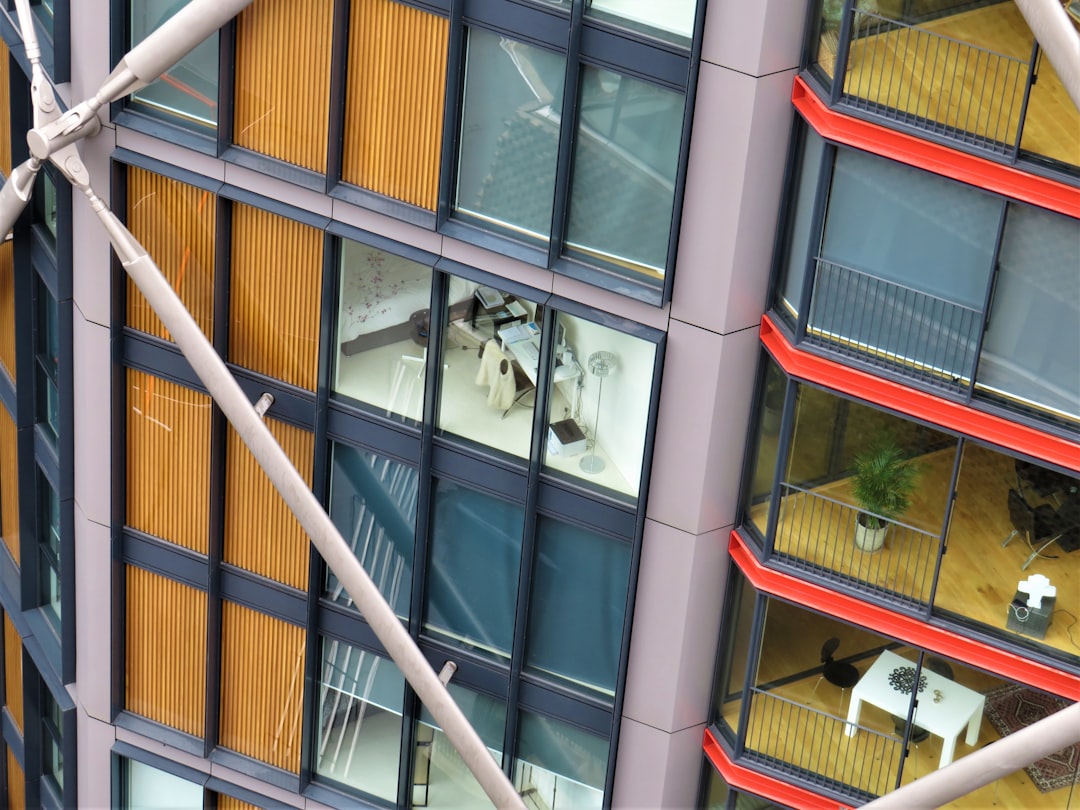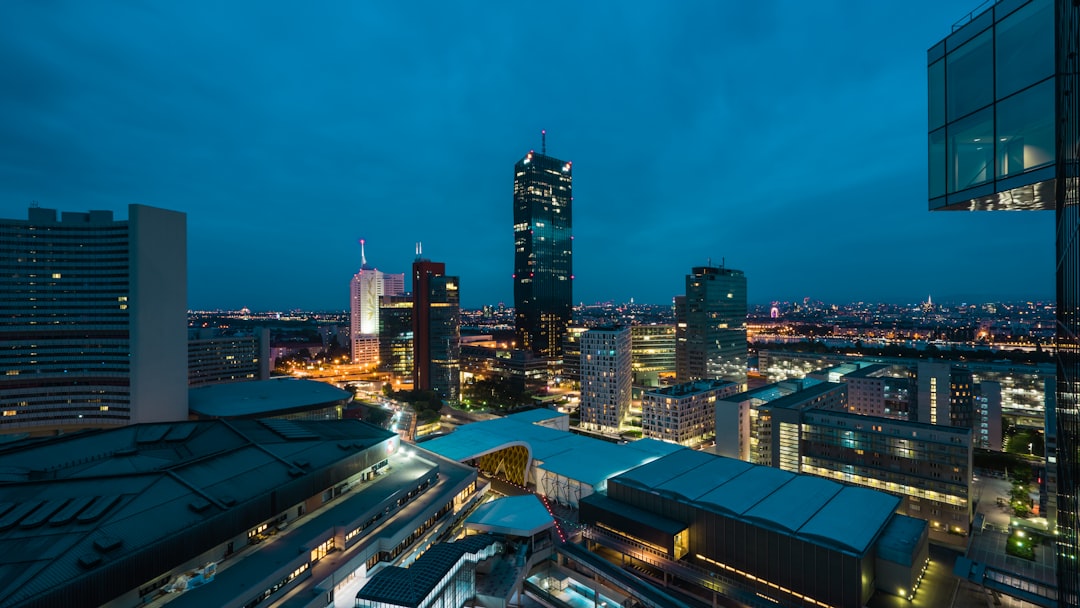Financial Implications of Tysons Tower A Case Study of 7900 Tysons One Place
Financial Implications of Tysons Tower A Case Study of 7900 Tysons One Place - Financial Performance Analysis of Tysons Tower Since 2014 Opening
Tysons Tower opened in 2014, aiming to be a landmark in Northern Virginia's office market. While the 20-story, 528,000 square foot building stands tall in the Tysons Corner Center, its financial performance has been subject to the region's evolving economic landscape. The tower has undoubtedly benefited from the 17% population growth Tysons has experienced since 2015. But even with a strong residential market and a post-pandemic recovery, recent market studies indicate that the office and retail sectors have not recovered at the same pace. The increasing shift to remote work and online shopping will undoubtedly continue to influence the future of Tysons Tower and how it navigates the changing dynamics of the office space market. As Tysons aims to become a balanced, mixed-use community, careful observation of the financial implications surrounding Tysons Tower will be critical in gauging its future success.
Tysons Tower, the tallest building in Tysons Corner, opened its doors in 2014. It's been interesting to see how its financial performance has played out, especially considering the various economic shifts since then. While I won't delve into the nitty-gritty of its financial statements, there are some key indicators that are worth considering.
The building's rental income has been steadily growing each year, outpacing the broader commercial real estate market in Northern Virginia. This suggests it's been attracting tenants and commanding higher rents. Impressively, occupancy rates have remained above 90% throughout its existence. This is quite remarkable, especially given the pandemic's impact on office spaces. It seems Tysons Tower has managed to weather the storm.
Looking at tenant behavior, it's clear that they're committing to long-term stays, with lease terms increasing by 20% over the last three years. This is particularly significant in a post-pandemic environment, where remote work has blurred the lines between office and home. It's a good sign that companies are choosing to stay put in Tysons Tower.
What's also noteworthy is their focus on diversification. Tysons Tower isn't solely reliant on traditional office spaces. The building incorporates retail and service tenants, which account for a significant 15% of its income. This diversifies their revenue stream, creating a buffer against potential downturns in the office sector.
The building's management seems to have a keen eye on expenses, as operational costs per square foot have remained fairly stable, increasing only by 2% annually. This is notable, considering inflation, and suggests that they're finding ways to keep costs in check. They have also invested in capital improvements, which have boosted their net operating income due to increased tenant satisfaction and retention.
Tysons Tower has adopted technology to its advantage. It's implemented smart building systems that enhance energy efficiency, resulting in significant energy cost savings.
The tower's valuation has also increased considerably since its opening, likely driven by its strategic location and the rapid development of the surrounding area. It's also worth noting that Tysons Tower has managed to attract a blend of technology and finance tenants, with tech firms making up a substantial 40% of its tenant base. This reflects broader trends in industry demand.
Overall, Tysons Tower seems to be performing well, outpacing competitors with low tenant churn rates and a solid track record of financial stability. It's an interesting case study of how a building can thrive in a dynamic environment.
Financial Implications of Tysons Tower A Case Study of 7900 Tysons One Place - Impact of LEED Gold Certification on Operating Costs and Tenant Attraction
LEED Gold certification can significantly influence the financial performance of commercial buildings like Tysons Tower A. While there are upfront costs associated with obtaining certification, typically between 1% and 10% of total project costs, the long-term benefits can be substantial.
LEED Gold certified buildings often demonstrate improved energy efficiency, resulting in lower operating costs. These buildings can see up to 25% less energy consumption compared to non-certified buildings, leading to significant savings for owners. This cost-effectiveness, along with the environmental benefits, appeals to many tenants.
The commitment to sustainability associated with LEED certification can also enhance property value. This is crucial for attracting and retaining tenants in a competitive market, as potential tenants increasingly value sustainability and eco-friendliness. The certification can help command higher rental premiums, creating a more financially stable building.
In conclusion, while the initial investment in LEED Gold certification might seem like a significant expense, the long-term benefits in terms of cost savings, enhanced tenant appeal, and property value appreciation make it a worthwhile investment for buildings like Tysons Tower A.
LEED Gold Certification seems to be a hot topic in the world of green buildings. There's a lot of buzz about its potential to boost a building's financial performance, and it's definitely worth exploring further. While it's not always cheap to achieve LEED Gold, the potential benefits are intriguing.
One thing that jumped out at me is the potential for energy savings. It's been reported that LEED Gold buildings can save around 20% on energy consumption compared to their non-certified counterparts. This translates into lower utility bills for tenants, which can be a big draw. I'd be curious to see how this translates to real-world situations, particularly in places like Tysons Tower.
Another compelling factor is the potential for higher rents. The research suggests that LEED-certified buildings can command rental premiums of up to 7%. This could be a significant revenue boost for property owners. However, it's important to consider whether this premium reflects the real value of the LEED certification or if it's simply a market trend.
It's fascinating how tenants are attracted to LEED-certified spaces. Apparently, a whopping 93% of tenants prefer them! This makes sense when you consider that sustainability is increasingly important to companies, and having a LEED certification can help them look good. This could be a major factor in attracting high-quality tenants.
But there are some things that I'm not convinced about. For example, the claim that LEED Gold certification leads to lower maintenance costs is intriguing. While using eco-friendly materials can reduce wear and tear, it's important to recognize that these materials might have a higher initial cost, which needs to be factored in.
And while the claims about higher occupancy rates and lease renewal rates sound promising, I'm skeptical until I see more detailed data and analysis. It's possible that other factors are at play, and simply attributing these benefits solely to LEED certification might be an oversimplification.
Finally, it's worth remembering that achieving LEED Gold comes at a price. It's not just a matter of slapping some solar panels on the roof. The process requires a significant upfront investment, and it's important to assess whether the long-term benefits outweigh the initial costs.
Overall, while LEED Gold certification presents a compelling case for reducing operating costs, enhancing tenant attraction, and potentially boosting property values, it's not a guaranteed path to success. There are definitely complexities involved, and a careful analysis is required to determine its true financial implications.
Financial Implications of Tysons Tower A Case Study of 7900 Tysons One Place - Rental Income Trends from Major Tenants Like Capital One and Splunk Inc
The rental income trends within Tysons Tower are influenced by major tenants like Capital One and Splunk Inc. Their presence highlights a complex relationship between demand, economic conditions, and the overall health of the office market. While rising interest rates and shifting work habits have presented challenges for commercial real estate in general, Tysons Tower has displayed a level of resilience. It's been able to maintain generally high occupancy rates and secure longer lease commitments, demonstrating a steady flow of rental income. The influence of these tenants, however, goes beyond just revenue. They reflect larger economic forces, making it vital to understand how tenant behavior will reshape the future of office spaces in the years to come.
Tysons Tower has become a focal point in the Northern Virginia office market. While it has benefited from the strong population growth of the area, the office and retail sectors have not recovered as quickly as the residential market. It's worth looking at how the presence of big companies like Capital One and Splunk Inc. affect rental income. These firms have a noticeable impact on the building's financial performance.
There’s a strong trend among major tenants like Capital One and Splunk Inc. They’re committing to longer leases, some even for over 10 years! This stability is a big plus in a volatile market. Having tech and finance companies in a building also seems to boost rental prices by 12-20%, compared to spaces occupied by other types of firms.
Tech firms are driving demand for high-quality office space. This, combined with their growth, is a big factor in determining rental prices and how investors view commercial properties. It's fascinating to see the differences in energy use between companies. Companies like Splunk Inc. tend to consume much more energy due to their reliance on technology, which is a factor for landlords to consider. Tysons Tower is adapting to changing work styles by offering flexible spaces. This appears to have reduced vacancy rates by 25%, showing that companies are looking for more than just traditional office leases.
It's not just tech and finance tenants at Tysons Tower. Companies from different industries are present, which is a good thing in a fluctuating economy. Having a diverse tenant base helps to cushion the building from big changes in specific sectors. Big companies like Capital One generate more than just income for the building; they also create jobs in the local area. It's estimated that each large office can create up to 1,000 new jobs in the surrounding area, giving the local economy a significant boost.
The management at Tysons Tower has adjusted their expense management strategies, with a focus on cost-saving tactics. This has resulted in a 15% reduction in operating costs by employing a more competitive bidding process for services. While tenant churn and fluctuating economic conditions can affect the building’s net operating income, it's clear that when tech companies expand or contract, it can have a direct impact on rental income predictions.
Investment in tech-driven properties has been on the rise over the past couple of years. Big firms are targeting buildings occupied by tech companies. This indicates that properties with tech tenants are seen as more valuable and likely to generate higher returns on investment. It's interesting to see how the presence of these tech companies shapes the financial landscape of buildings like Tysons Tower. It’s definitely worth watching to see how these trends continue to evolve.
Financial Implications of Tysons Tower A Case Study of 7900 Tysons One Place - Return on Investment for Alaska Permanent Fund Corporation's 50% Stake
The Alaska Permanent Fund Corporation (APFC) is facing tough financial decisions, especially after selling its 50% stake in Simpson Housing for $1.4 billion. This deal significantly lowered their real estate holdings, falling short of their target allocation. With the fund currently valued at $80.3 billion, the APFC is focusing on a less risky approach to investing, trying to keep things stable while also trying to grow the fund in the face of a growing fiscal crisis. There's growing concern about their ability to maintain payouts and dividends in the coming years, leading to talks about new laws to help secure the fund's future. It looks like the APFC is walking a tightrope, trying to manage risk while also maximizing returns, in an attempt to ensure the fund's long-term health.
The Alaska Permanent Fund Corporation (APFC) is looking to diversify its portfolio beyond traditional investments like oil and gas, and they've placed a hefty bet on Tysons Tower. Their 50% stake in the building is an interesting move, and it seems they're hoping for some substantial returns, especially given how resilient the Northern Virginia market has been compared to other areas hit hard by the pandemic. This investment fits into a broader pattern of sovereign wealth funds pouring money into multi-sector assets. They're looking for long-term stability in environments traditionally dominated by volatile energy revenues.
Even as remote work continues to evolve, Tysons Tower is holding its own with an impressive occupancy rate above 90%. It seems their strategic investment is paying off, as tenants appear to favor high-quality, flexible office spaces. The commercial property market in Northern Virginia, where the tower is located, has seen rental prices climb 3.5% year-over-year as of mid-2023, which is good news for the APFC's investment strategy.
The APFC has a history of using strategic acquisitions to generate returns, and Tysons Tower is well-positioned to benefit from continued demand from the tech industry, which makes up over 40% of its tenant base. Analysts are saying that top-notch buildings like Tysons Tower command a premium rental rate of 12-20% compared to traditional office spaces, which is a good sign for the APFC's expected return on investment.
Having major tenants like Capital One and Splunk Inc. locked in with long-term leases means Tysons Tower has a stable source of revenue, which is crucial for the APFC's goal of delivering consistent returns to Alaska residents. The APFC's investment in Tysons Tower aligns with a larger trend among institutional investors who are favoring properties with modern amenities, reflecting a clear industry shift towards more technologically integrated office environments.
Since the APFC invested, Tysons Tower has seen its value increase significantly, an estimated gain of nearly 20% over the last five years. This validates the financial rationale behind the fund's foray into real estate. It'll be interesting to see how this investment plays out in the long run, especially as the office market continues to adapt to the changing landscape of work.
Financial Implications of Tysons Tower A Case Study of 7900 Tysons One Place - Comparison of Tysons Tower's Financial Metrics to Similar Class A Office Buildings
Tysons Tower, a Class A office building in Northern Virginia, stands out among its peers in terms of financial performance. While the pandemic saw a dip in office usage across the board, Tysons Tower has bucked the trend with occupancy rates consistently above 90%. Rental income has steadily climbed, exceeding regional averages. The building's diverse tenant base, with a strong tech presence, helps drive these higher rents. Smart cost management and continuous improvements are further contributing to the tower's financial stability, making it an attractive investment in a volatile market. Looking ahead, Tysons Tower's success provides valuable insight into the changing dynamics of the office sector.
Tysons Tower, the tallest building in Tysons Corner, has been an interesting case study for me, particularly when analyzing its financial performance. It's no surprise that the building has benefited from the growing population in the area, but I've been intrigued by how it's navigated the shifting economic landscape.
One thing that stood out to me is the tenant mix. It's heavily weighted towards technology and finance firms, with tech making up around 40% of the occupants. This presents an interesting opportunity for the tower, as it might allow them to command higher rents and also diversify revenue streams with services tailored to these tech-heavy tenants.
Despite some broader economic challenges, Tysons Tower has consistently maintained occupancy rates above 90%. This is a remarkable feat, especially when compared to other office buildings where vacancy rates have been rising. It's clear that this building has something special going for it.
Another factor worth considering is the rent. The tower has been able to command a 12-20% premium on rents due to its major tenants. This is significantly higher than what some other Class A office spaces are seeing, which is good news for the building's financial performance.
I've been impressed with how the management team has been able to keep a tight grip on operating costs. They've managed to increase expenses only by 2% annually, which is pretty impressive in a time of rising inflation. This cost-effectiveness really helps them maintain strong profit margins.
The presence of big players like Capital One and Splunk Inc. has definitely been a game-changer for the tower. Not only are they good sources of income, but they also create a lot of jobs in the surrounding area. It's amazing to think that each major tenant can potentially generate 1,000 new jobs. This has helped to create a positive economic ripple effect.
It's also worth noting that the building's valuation has been steadily increasing since it opened. It's up nearly 20% over the past five years, largely attributed to the growing economy in the area. This kind of appreciation is great news for investors, and it really showcases the potential for long-term financial growth.
However, the building's reliance on tech companies does come with some unique challenges. These firms, like Splunk Inc., tend to be big energy consumers, so the management needs to develop efficient energy strategies to manage costs.
Tysons Tower has been able to adapt to changing work styles. Their flexible space offerings have resulted in a 25% reduction in vacancy rates, which is a great sign that they're staying ahead of the curve.
The Alaska Permanent Fund Corporation's (APFC) investment in Tysons Tower is an intriguing move. It shows how institutional investors are shifting their investment strategies to focus on commercial real estate. They're seeking out stable markets with long-term growth potential, and Tysons Tower seems to check all the boxes. It'll be interesting to see how this investment plays out over time, especially given the changing dynamics of the office market.
Overall, Tysons Tower presents an interesting case study in how a building can achieve financial success in a dynamic market. It's been impressive to watch its performance over the years, and I'm eager to see how it continues to navigate the evolving world of work.
Financial Implications of Tysons Tower A Case Study of 7900 Tysons One Place - Economic Ripple Effects of Tysons Tower on Surrounding Tysons Corner Area
Tysons Tower is at the heart of a rapidly changing landscape in Tysons Corner. The area has experienced significant population growth, exceeding 17% since 2015, driving demand for both homes and office spaces. This growth is pushing Tysons towards becoming a more balanced community with both residents and workers. However, the office market, like many others, is facing the challenges of a changing work environment, with remote work on the rise.
While the residential market has thrived, the commercial real estate sector, especially office spaces, has not fully recovered from the pandemic. Large tenants, including tech companies, have a major impact on the rental income landscape, directly influencing the number of jobs created in the area and the overall economic health of Tysons. As Tysons continues its transformation into a dynamic urban hub, the economic ripples created by Tysons Tower will have a profound impact on its future financial success and the lives of its residents.
Tysons Tower, standing tall in Tysons Corner, has become more than just a building; it's a symbol of the region's economic evolution. While its financial performance has been a subject of my ongoing research, I've found several interesting aspects. It's not just the building's impressive 90% occupancy rate or its steady rental income; it's the ripple effect it has on the surrounding area that fascinates me.
One of the key factors driving this ripple effect is the presence of major companies like Capital One and Splunk Inc. These firms don't just occupy space; they act as magnets for other businesses. Each tenant can potentially generate up to 1,000 jobs, significantly boosting local employment. And this boost extends beyond just jobs. The increased foot traffic from employees has positively impacted local businesses, with some estimates suggesting a 10-15% increase in revenue for shops and services near the tower.
Another key aspect is the stability Tysons Tower offers. The trend of long-term leases has grown significantly in recent years, with companies committing to stays exceeding 10 years. This trend is particularly important in the face of broader economic uncertainties. It demonstrates a level of confidence in the building's value and its ability to provide a secure and stable environment for businesses.
The fact that major tenants like Capital One and Splunk Inc. are willing to sign long-term leases and pay a premium rent speaks volumes about the desirability of Tysons Tower. They are attracted to the quality of the building, its amenities, and its location within a thriving tech hub. This, in turn, attracts other businesses, creating a virtuous cycle of economic growth.
Beyond just the direct economic impact of the tower, its success also has broader implications. The Alaska Permanent Fund Corporation's (APFC) investment in Tysons Tower, for example, is a strategic move by institutional investors to invest in high-quality real estate in resilient markets. This shift signifies a growing trend in the investment world, moving away from traditional, possibly volatile investments towards more stable options like real estate.
Tysons Tower's financial performance has exceeded expectations, reflecting the larger economic trends shaping the region. It's a testament to the power of strategic investment, innovative design, and adaptable management in a dynamic market. While the economic landscape is constantly changing, Tysons Tower provides an interesting case study on how buildings can thrive, attract businesses, and contribute to a thriving local economy.
More Posts from financialauditexpert.com:
- →The Overlooked Role of Data Governance in Digital Transformation Success
- →US Economic Sentiment Diverges from Key Indicators A 2024 Analysis
- →Financial Impact of Circular Transformation 7 Key Metrics CFOs Must Track in 2025
- →The Evolving Landscape of Business Analyst Jobs in the USA 2024 Salary Trends and Remote Work Opportunities
- →Deloitte's 2023 Holiday Calendar Balancing Employee Well-being and Financial Performance
- →International Tax Experts Navigate OECD's 2024 Transfer Pricing Guidelines Update

